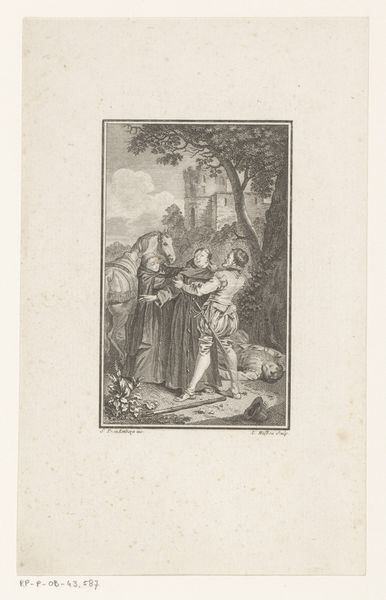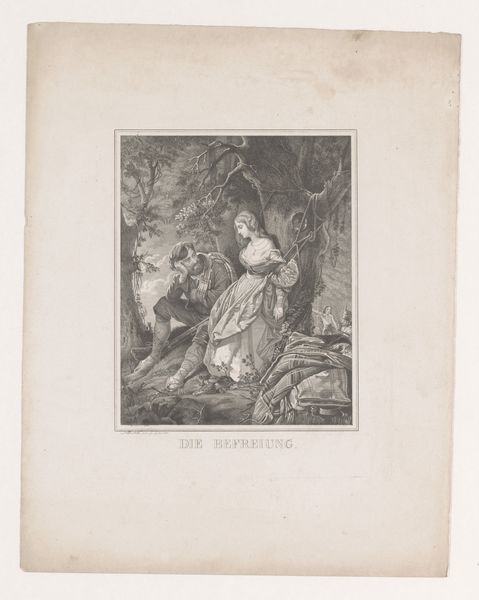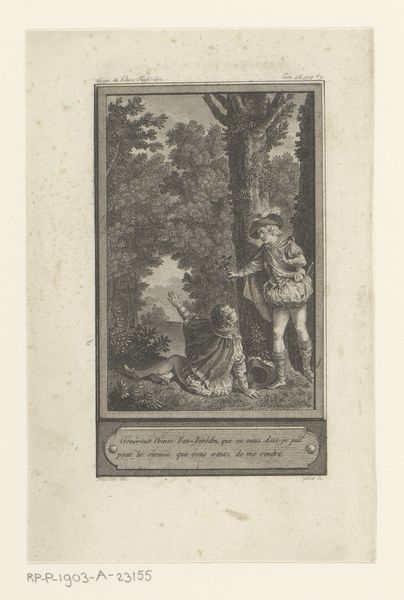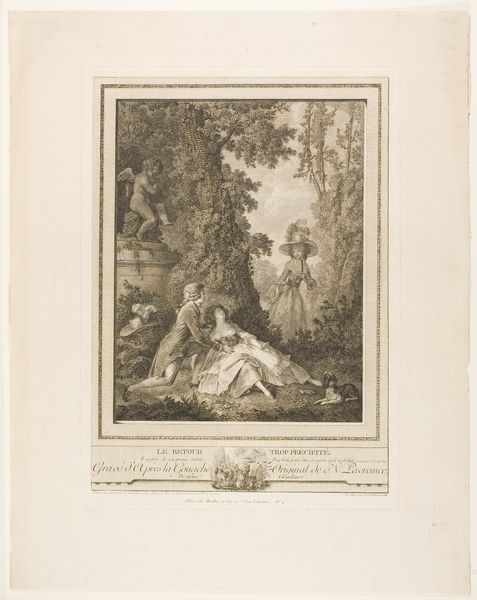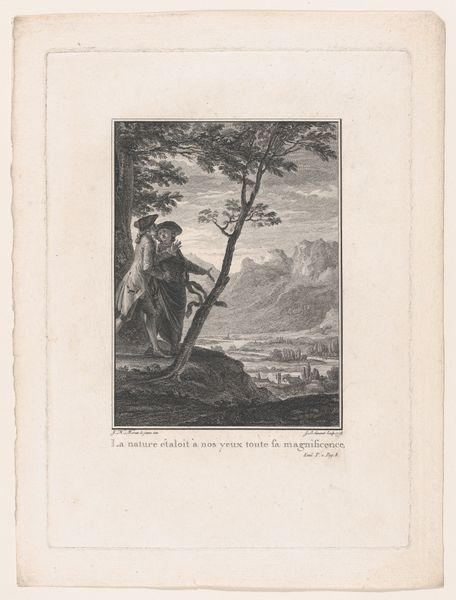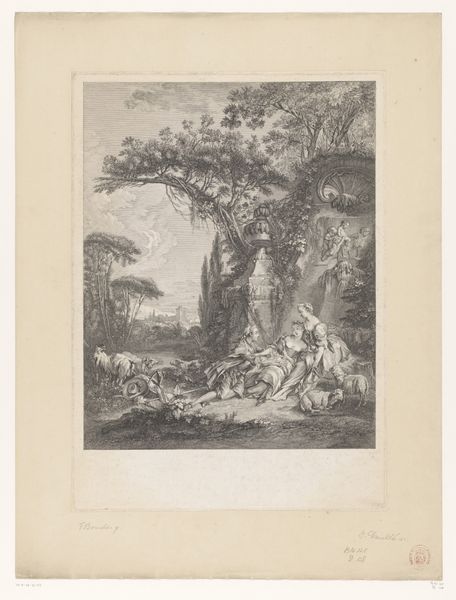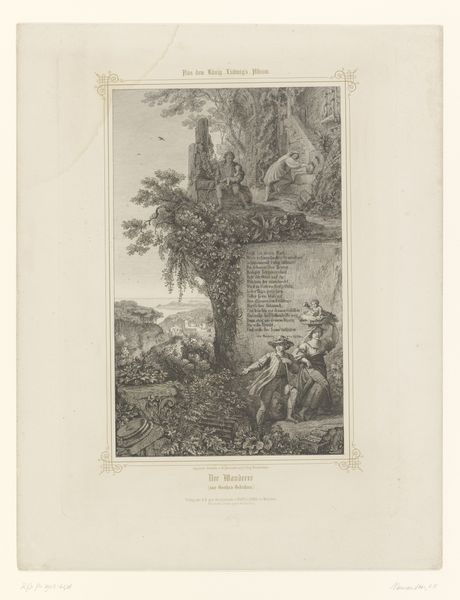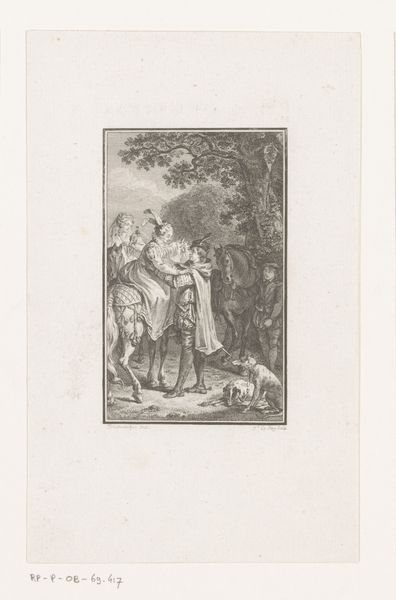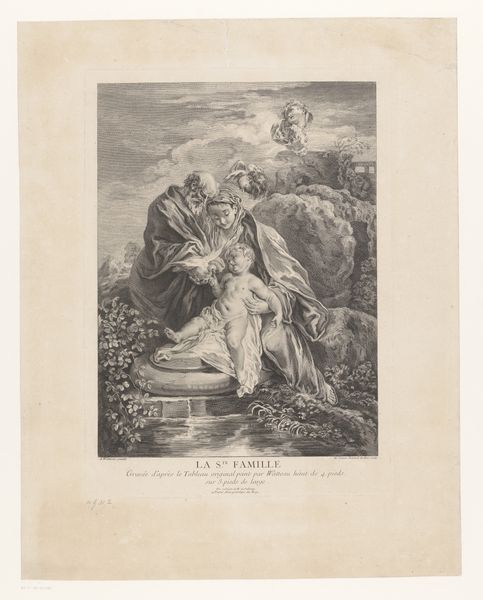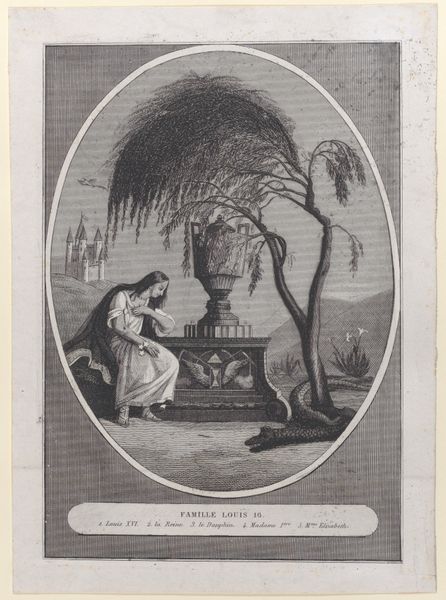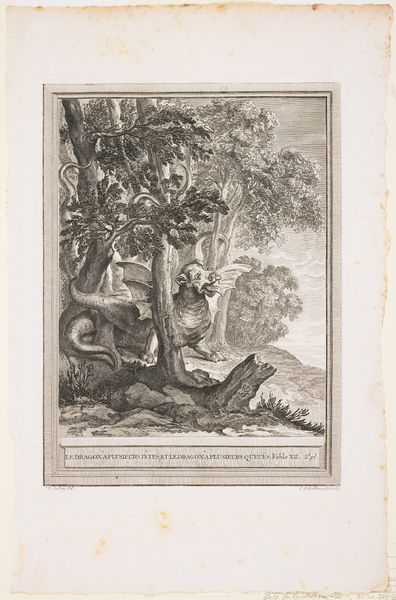
Max Klinger's Radierungen zu Apulejus' Märchen Amor und Psyche, Opus V a+b 1909 - 1920
0:00
0:00
drawing, print, etching
#
drawing
#
narrative-art
# print
#
etching
#
landscape
#
etching
#
pencil drawing
#
symbolism
#
history-painting
Dimensions: Overall: 17 11/16 x 12 3/8 x 3/8 in. (45 x 31.5 x 1 cm)
Copyright: Public Domain
Curator: I find myself immediately drawn to the melancholic stillness that pervades this etching. Editor: Yes, there's a contained, dreamlike quality. What we're viewing is one of Max Klinger's prints from "Radierungen zu Apulejus' Märchen Amor und Psyche," completed between 1909 and 1920. Curator: Klinger clearly engages the classical mythos of Cupid and Psyche. We see a gathering, seemingly within a grove or at a coastal edge, watched over by a looming arboreal presence. Are these symbols representative of deeper themes? Editor: Absolutely. What stands out is the materiality itself. It's an etching, a printmaking process rooted in craft. Consider the labor invested in the delicate lines, the manipulation of the metal plate. The means of production were meticulous. Curator: Klinger employs sharp contrasts and detailed rendering to build emotional resonance. The symbols—the embracing couple, the gathered figures— speak of unity and separation, perhaps the dichotomy of mortal and immortal love as well as of the human experience. Editor: Indeed. I think it is significant that Klinger embraced printmaking and its reproducibility. It made classical themes accessible to wider audiences, taking narrative out of painting for the wealthy, which is socially radical. Curator: You touch on accessibility. How might the use of symbolism contribute to how these artworks speak to viewers across time, speaking across eras? Editor: Printmaking's value resided in multiplying access while art objects were becoming increasingly fetishized by elite collectors. Also, Klinger's linear vocabulary feels very connected to emerging trends in illustration and early cinema. Curator: I think that it encapsulates something about how myth persists as cultural memory; the story and characters shift according to artistic interpretation, each retaining key emotional weights from previous historical iterations. Editor: Yes. The method serves his goal in a sense: making myth relevant to society at the height of industrial capitalism. I have such newfound admiration for this body of work now. Curator: I agree. It’s always thrilling when historical methods convey such emotional, impactful meaning over time, in so many contexts.
Comments
No comments
Be the first to comment and join the conversation on the ultimate creative platform.

